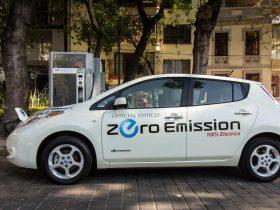By Matt Hamblen
Self-driving cars and shuttles are coming, although Covid has slowed down some of the progress toward the technology. Raising capital amid rising interest rates will not help, speakers at the Autonomous Technologies Conference on Monday said.
There are admittedly still multiple tech challenges to be overcome, including a continuing debate over whether lidar is essential in autonomy alongside cameras and radar sensors. Government guidance, in the U.S. especially, is unclear, and a number of U.S. cities are trying out autonomous shuttles or robo-taxis, but there is not a standard approach.
More worrying is whether investors are sitting back after a big push two years ago. Rising interest rates are sure to hurt the efforts of companies seeking their help.
“The gold rush of funding is subsiding,” said Roger Lanctot, an analyst at Strategy Analytics, during the Autonomous Technologies Conference on Monday. The all-day event was held in San Jose, California, in conjunction with the Sensors Converge conference and exhibition. Mobility investments were on a parabolic rise several years ago, “but now it’s a step back,” Lanctot added.
“Fundraising is extremely challenging at this point,” added Clayton Tino, chief technology officer for Beep, which is promoting transit projects with self-driving vehicles in Florida and elsewhere.
The company of 100 employees recently raised $50 million for its projects in a second Series A round. While inflation and rising interest rates are an ongoing concern, Tino said, the long-term prospect for transit systems that use autonomous shuttles and other vehicles is promising.
Beep’s latest project involves the potential to move up to 2,700 passengers per hour in Jacksonville, Florida in 2023. There and in Texas and Arizona, Beep has attracted interest from land developers who worry about building parking lots where a single space can cost $20,000. At that cost, a parking deck can cost $100 million, so a self-driving shuttle service is considered a better investment, he said.
But Tino is a realist. He knows there are a number of obstacles to overcome to win general acceptance from the public of self-driving shuttles.
“Autonomy is frankly scary,” he said. “I’m a tech-forward person, but the first time you go 25 miles an hour without a safety driver can be frankly unnerving.”
He is also concerned with how a woman traveling alone late at night would feel about boarding a self-driving vehicle. And, what if a transit agency wants to charge for a ride, but a rider boards and refuses to pay? “Does the shuttle just stop, or what?” he asked.
In a 100-day Yellowstone National Park autonomous shuttle pilot, Beep encountered something else: wild moose and other animals that would stand and block the path of a shuttle. Most autonomous vehicles being tested today will honk loudly at an animal blocking the road, but Yellowstone urges drivers not to honk at animals to prevent aggressive behavior.
Link: https://www.fierceelectronics.com/sensors/self-driving-tech-faces-investor-slowdown-amid-rising-interest-rates?itm_source=parsely-api&utm_source=pocket_mylist
Source: https://www.fierceelectronics.com
















Leave a Reply